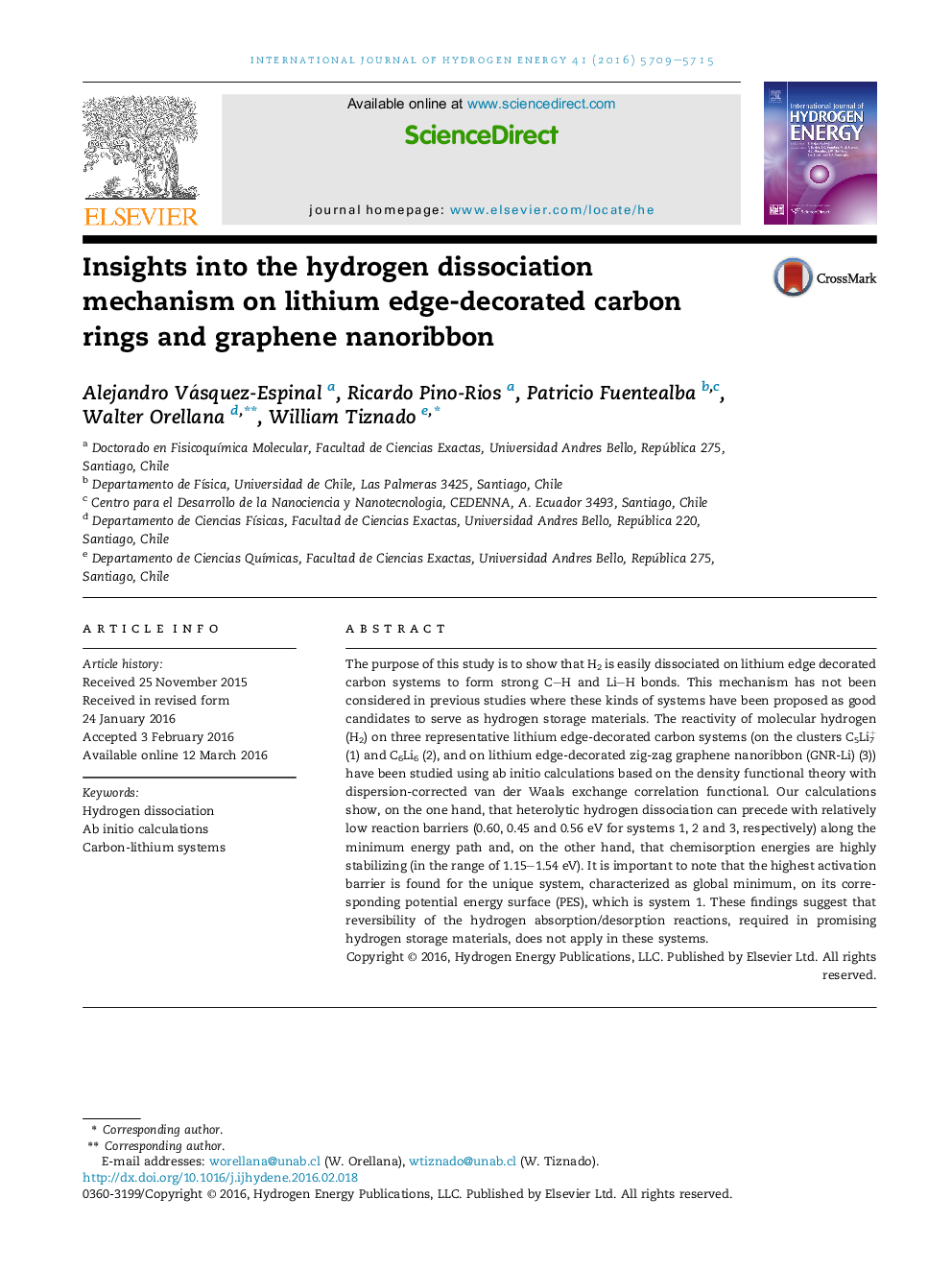| کد مقاله | کد نشریه | سال انتشار | مقاله انگلیسی | نسخه تمام متن |
|---|---|---|---|---|
| 1277683 | 1497412 | 2016 | 7 صفحه PDF | دانلود رایگان |
• The reactivity of molecular hydrogen (H2) on three representative C-Li systems has been studied using ab initio calculations.
• The calculations showed that hydrogen dissociation on these systems is kinetic and energetically favored.
• The H2 is dissociated, preventing the reversible hydrogen release under moderate conditions.
The purpose of this study is to show that H2 is easily dissociated on lithium edge decorated carbon systems to form strong C–H and Li–H bonds. This mechanism has not been considered in previous studies where these kinds of systems have been proposed as good candidates to serve as hydrogen storage materials. The reactivity of molecular hydrogen (H2) on three representative lithium edge-decorated carbon systems (on the clusters C5Li7+ (1) and C6Li6 (2), and on lithium edge-decorated zig-zag graphene nanoribbon (GNR-Li) (3)) have been studied using ab initio calculations based on the density functional theory with dispersion-corrected van der Waals exchange correlation functional. Our calculations show, on the one hand, that heterolytic hydrogen dissociation can precede with relatively low reaction barriers (0.60, 0.45 and 0.56 eV for systems 1, 2 and 3, respectively) along the minimum energy path and, on the other hand, that chemisorption energies are highly stabilizing (in the range of 1.15–1.54 eV). It is important to note that the highest activation barrier is found for the unique system, characterized as global minimum, on its corresponding potential energy surface (PES), which is system 1. These findings suggest that reversibility of the hydrogen absorption/desorption reactions, required in promising hydrogen storage materials, does not apply in these systems.
Figure optionsDownload as PowerPoint slide
Journal: International Journal of Hydrogen Energy - Volume 41, Issue 13, 13 April 2016, Pages 5709–5715
